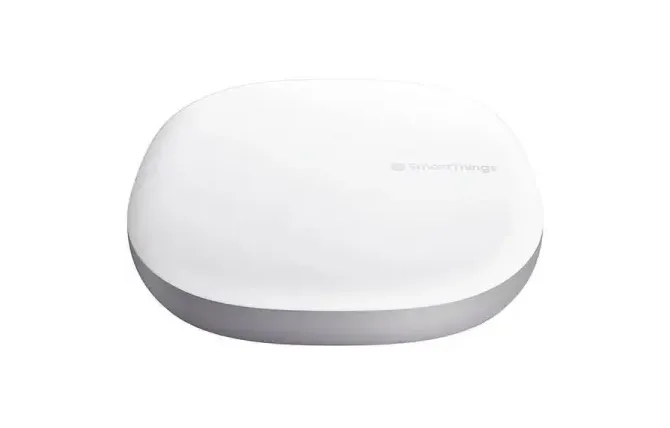In today's connected homes, a glitchy hub can bring everything to a halt. This comprehensive SmartThings Hub troubleshooting guide provides step-by-step fixes and efficiency tips that walk you through proven solutions, efficiency gains, and performance tweaks, ensuring your lights, sensors, and routines respond on cue every time you need them. These troubleshooting techniques and efficiency optimization strategies will boost your hub's performance.
Why Regular Maintenance Matters
The SmartThings Hub serves as the brain of your Zigbee, Z‑Wave, and Wi‑Fi devices. When that brain slows down, your entire smart home feels the lag. Ignoring minor hiccups can lead to missed security alerts, unresponsive automations, and needless frustration. Regular upkeep keeps your network healthy, preserves battery life on sensors, and protects your investment for years to come. For even greater flexibility, SmartThings can also be integrated with Home Assistant, allowing you to manage devices across both ecosystems seamlessly.
Common Signs Your Hub Needs Attention
- Delayed responses from voice assistants
- Devices showing “offline” status in the app
- Scenes or routines triggering inconsistently
- Firmware update failures that never complete
If you notice any of these symptoms, it’s time to dive into smartthings hub troubleshooting.
Quick‑Start Checklist
Before you roll up your sleeves, run through this rapid checklist:
- Confirm the hub’s LED pattern; solid green indicates normal operation.
- Test your router’s internet connection using another device.
- Update the SmartThings mobile app to the latest version.
- Note any error messages in the app’s History tab for later reference.
Completing these basics solves more than half of beginner issues.
SmartThings Hub Troubleshooting Guide
1. Power and Network Essentials
Unplug the hub’s power for 30 seconds to clear cached processes, then reconnect it. If you rely on Ethernet, try a different port or cable. For Wi‑Fi setups, position the hub at least one meter from the router to cut down on interference, and verify it’s on the 2.4 GHz band, which offers better range for smart devices.
2. Device Pairing Problems
When a sensor refuses to join the network, perform an exclusion or factory reset on the device first, then re‑add it with the SmartThings app. For Z‑Wave gadgets, run a “Z‑Wave Repair” from the hub’s settings to rebuild routing tables. This step often restores stubborn locks, thermostats, and switches to full functionality.
3. Automation Glitches
Malformed routines can trigger at random times. Edit the automation, tap “History,” and note the last successful execution. Recreate routines using the modern “Routines” interface instead of legacy SmartApps, and include clear conditions-such as time windows-to avoid infinite loops.
4. Zigbee Network Optimization
Change the hub’s Zigbee channel in Advanced Settings if you live near crowded Wi‑Fi networks on channels 1, 6, or 11. Channels 15 and 20 usually sit in quieter spectrum, leading to faster device joins and fewer disconnects.
Boost Performance After Fixes
Update Firmware and Device Drivers
Navigate to Hub → Settings → Updates and install pending firmware. Next, visit each device’s page and tap “Driver Update” to ensure local execution where possible, trimming cloud latency and boosting reliability.
Streamline Scenes and Routines
Delete duplicate or outdated scenes. Combine similar actions into single routines with conditional logic-“If motion after sunset, then turn on hallway light at 50 percent.” Fewer routines mean less processing strain on the hub.
Manage Reporting Intervals
Sensors that ping every minute swamp bandwidth and drain batteries. Set motion detectors to report every five minutes and energy monitors every fifteen unless real‑time data is essential.
SmartThings Hub Setup Essentials
A flawless smartthings hub setup forms the foundation of a reliable smart home. Start by connecting the hub directly to your router with Ethernet during onboarding, which shortens firmware download times and prevents Wi‑Fi drop‑outs. Make sure to select the correct regional server in the SmartThings mobile app; mismatched regions are a hidden source of device discovery failures later.
Reboot SmartThings Hub Safely
Occasional restarts clear memory leaks and stuck processes. To reboot smartthings hub without risking data corruption, open the SmartThings app, go to Hub → More Options → Reboot. If the UI is frozen, unplug the power for 30 seconds, then reconnect-never press the reset pin unless directed by support.
How to Configure SmartThings Hub Like a Pro
Wondering how to configure smartthings hub for top‑tier performance? After initial setup, dive into Settings → Advanced → Location Mode to define Home, Away, and Night states. Assign each state to automations so lights, cameras, and thermostats react intelligently. Toggle “Allow secure locally” for Z‑Wave S2 devices to reduce cloud latency while keeping encryption intact.
SmartThings Group Devices for Efficient Control
You can smartthings group devices like bulbs, plugs, and switches into Rooms or Zones. Grouping lets you issue one command-“Turn off Bedroom”-rather than micromanaging individual loads. In the app, tap Devices → + → Create Room, add fixtures, and use the new room tile in Scenes to simplify bedtime routines or whole‑house shutdowns.
SmartThings Motion Sensor Manual: Quick Reference
Lost your paper guide? This condensed smartthings motion sensor manual explains pairing: pull the battery tab, hold the reset button until the LED blinks, then open the SmartThings app and tap Add → Sensor → Motion Sensor. After pairing, place the sensor six feet high, angled toward entryways for optimal detection.
Keep Your Smart Home Running Smoothly
A monthly health check keeps small glitches from becoming big headaches:
- Reboot the hub on the first day of each month.
- Test critical automations like security alerts.
- Back up custom device handlers to a safe location.
- Review the official SmartThings status page for outages.
This simple schedule maintains peak performance with minimal effort.
Conclusion
By mastering smartthings hub troubleshooting, you’ll banish downtime and enjoy a smart home that just works. Regular upkeep, thoughtful automations, and timely firmware updates keep your hub acting as the powerful heart of your connected household-so every command fires instantly and every routine feels effortless.
